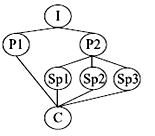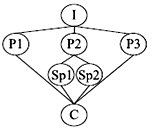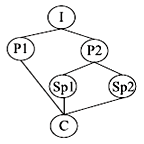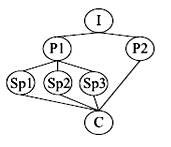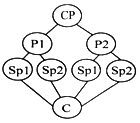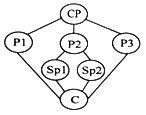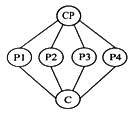备考2019年高考英语一轮复习32:议论文类阅读理解
教材版本:英语
试卷分类:英语高考
试卷大小:1.0 MB
文件类型:.doc 或 .pdf 或 .zip
发布时间:2024-04-01
授权方式:免费下载
下载地址:点此下载
以下为试卷部分试题预览
| 1. 阅读理解 | |
|
阅读理解
Getting less sleep has become a bad habit for most American kids. According to a new survey(调查) by the National Sleep Foundation, 51% of kids aged 10 to 18 go to bed at 10 pm or later on school nights, even though they have to get up early. Last year the Foundation reported that nearly 60% of 7- to 12-year-olds said they felt tired during the day, and 15% said they had fallen asleep at school. How much sleep you need depends a lot on your age. Babies need a lot of rest: most of them sleep about 18 hours a day! Adults need about eight hours. For most school-age children, ten hours is ideal(理想的). But the new National Sleep Foundation survey found that 35% of 10- to 12-year-olds get only seven or eight hours. And guess what almost half of the surveyed kids said they do before bedtime? Watch TV. “More children are going to bed with TVs on, and there are more opportunities(机会) to stay awake, with more homework, the Internet and the phone,” says Dr. Mary Carskadon, a sleep researcher at Brown University Medical School. She says these activities at bedtime can get kids all excited and make it hard for them to calm down and sleep. Other experts say part of the problem is chemical. Changing levels of body chemicals called hormones not only make teenagers' bodies develop adult characteristics, but also make it hard for teenagers to fall asleep before 11 pm. Because sleepiness is such a problem for teenagers, some school districts have decided to start high school classes later than they used to. Three years ago, schools in Edina, Minnesota, changed the start time from 7:25 am to 8:30 am. Students, parents and teachers are pleased with the results.
|
|
| 2. 阅读理解 | |
|
阅读理解
A new commodity brings about a highly profitable, fast-growing industry, urging antitrust(反垄断)regulators to step in to check those who control its flow. A century ago ,the resource in question was oil. Now similar concerns are being raised by the giants(巨头)that deal in data, the oil of the digital age. The most valuable firms are Google, Amazon, Facebook and Microsoft. All look unstoppable.
|
|
| 3. 阅读理解 | |
|
阅读与理解
D Old Problem , New Approaches While clean energy is increasingly used in our daily life,global warning will continue for some decades after CO2 emissions(排放)peak. So even if emission were to begin decrease today,we would still face the challenge of adapting to climate. Here I will stress some smarter and more creative examples of climate adaptation. When it comes to adaptation,it is important to understand that climate change is a process. We are therefore not talking about adapting to a new standard,but to a constantly shifting set of conditions. This is why in part at least,the US National Climate Assessment says that:”there is no ‘one-size fit all' adaptation.” Nevertheless,there are some actions that offer much and carry little risk or cost. Around the world people are adapting in surprising ways,especially in some poor countries,Floods have some more damaging in Bangladesh in recent decades. Mohammed Rezwan saw opportunity where others saw only disaster. His not-for-profit organization runs 100 river boats that server as floating libraries,schools,and health clinics,and are equipment with solar panels and other communication facilities. Rezwan is creating floating connectivity(连接) to replace flooded roads and highways. But he is also working at a far more fundamental level:his staff people how to make floating gardens fish ponds prevent starvation during the wet season. Elsewhere in Asia even more astonishing actions are being taken. Chewang Nophel lives in a mountainous region in India, where he is known as the Ice Man. The loss of glaciers(冰川) there due to global warming represents an enormous threat to agriculture. Without the glaciers, water will arrive in the rivers at times when it can damage crops. Norphel's inspiration come from seeing the waste of water over winter, when it was not needed. He directed the wasted water into shallow basins where it froze, and was stored until the spring. His fields of ice supply perfectly timed irrigation(灌溉) water. Having created nine such ice reserves. Nophel calculates that he has stored about 200, 000m3 of water. Climate change is a continuing process, so Norhel's ice reserves will not last forever. Warming will overtake them. But he is providing a few years during which the farmers will, perhaps, be able to find other means of adapting. Increasing Earth's reflectiveness can cool the planet. In southern Spain the sudden increase of greenhouses (which reflect light back to space) has changed the warming trend locally, and actually cooled the region. While Spain as a whole is heating up quickly, temperatures near the greenhouses have decreased. This example should act as an inspiration for all cities. By painting buildings white, cities may slow down the warming process. In Peru, local farmers around a mountain with a glacier that has already fallen victim to climate change have begun painting the entire mountain peak white in the hope that the added reflectiveness will restore the life-giving ice. The outcome is still far from clear, But the World Bank has included the project on its of ‘100 ideas to save the planet”. More ordinary forms of adaptation are happening everywhere. A friend of mine owns an area of land in western Victoria. Over five generations the land has been too wet for cropping. But during the past decade declining rainfall has allows him to plant highly profitable crops. Farmers in many countries are also adapting like this—either by growing new produce, or by growing the same things differently. This is common sense, But some suggestions for adapting are not. When the polluting industries argue that we've lost the battle to control carbon pollution and have no choice but to adapt, it's a nonsense designed to make the case for business as usual. Human beings will continue to adapt to the changing climate in both ordinary and astonishing ways. But the most sensible form of adaptation is surely to adapt our energy systems to emit less carbon pollution. After all, if we adapt in the way, we may avoid the need to change in so many others.
|
|
| 4. 阅读理解 | |
|
阅读理解
D Hollywood's theory that machines with evil(邪恶) minds will drive armies of killer robots is just silly. The real problem relates to the possibility that artificial intelligence(AI) may become extremely good at achieving something other than what we really want. In 1960 a well-known mathematician Norbert Wiener, who founded the field of cybernetics(控制论), put it this way: “If we use, to achieve our purposes, a mechanical agency with whose operation we cannot effectively interfere(干预), we had better be quite sure that the purpose which we really desire.” A machine with a specific purpose has another quality, one that we usually associate with living things: a wish to preserve its own existence. For the machine, this quality is not in-born, nor is it something introduced by humans; it is a logical consequence of the simple fact that the machine cannot achieve its original purpose if it is dead. So if we send out a robot with the single instruction of fetching coffee, it will have a strong desire to secure success by disabling its own off switch or even killing anyone who might interfere with its task. If we are not careful, then, we could face a kind of global chess match against very determined, super intelligent machines whose objectives conflict with our own, with the real world as the chessboard. The possibility of entering into and losing such a match should concentrate the minds of computer scientists. Some researchers argue that we can seal the machines inside a kind of firewall, using them to answer difficult questions but never allowing them to affect the real world. Unfortunately, that plan seems unlikely to work: we have yet to invent a firewall that is secure against ordinary humans, let alone super intelligent machines. Solving the safety problem well enough to move forward in AI seems to be possible but not easy. There are probably decades in which to plan for the arrival of super intelligent machines. But the problem should not be dismissed out of hand, as it has been by some AI researchers. Some argue that humans and machines can coexist as long as they work in teams—yet that is not possible unless machines share the goals of humans. Others say we can just “switch them off” as if super intelligent machines are too stupid to think of that possibility. Still others think that super intelligent AI will never happen. On September 11, 1933, famous physicist Ernest Rutherford stated, with confidence, “Anyone who expects a source of power in the transformation of these atoms is talking moonshine.” However, on September 12, 1933, physicist Leo Szilard invented the neutron-induced(中子诱导) nuclear chain reaction.
|
|
| 5. 阅读理解 | |
|
阅读理解
Kids seem to spend endless hours on smartphones, computers and tablets these days. The best thing parents can do to prevent it is to encourage youngsters to spend more time outdoors in the sunlight. There has been a massive rise around the globe in short-sightedness—or myopia as it's officially known—over recent decades. Myopia or short-sightedness is becoming more common. Lack of natural light seems to be the key issue. “The main factor seems to be a lack of exposure to direct sunlight, because children who study a lot and who use computers or smartphones or tablet computers a lot have less opportunity to run around outside and are less exposed to sunshine and because of that children seem to be at more risk of developing shortsightedness.” Professor Hammond says, “It may be there's no coincidence that in East Asian countries, the most myopic ones all relate may to be the that maths league tables(排名表). These kids are being pushed with very intensive education from a very young age and spend a lot of time indoors studying close up. Therefore the concern is that all close work—like playing with the iPhone—carries the potential that it could make them more shortsighted.” The best thing to do, say the experts, is to get children playing outside as much as possible. “In a perfect world, probably on average across the week and the weekend, two hours a day outdoors is protective of becoming short-sighted in children. Healthy diet is really also important—in terms of getting oily fish, green vegetables, green leafy vegetables as much as possible. “What we need to look at is ways of modifying the impact that these activities have on their visual development.” Professor Hammond said, “There are eye drops and other treatments to slow myopia progression. But in terms of preventing myopia itself, there isn't any data out there at the moment in terms of the question, 'Could the drops we use slow progression or stop myopia developing at all? ' ”
|
|
| 6. 阅读理解 | |
|
阅读理解
Competition occurs naturally between living beings which co-exist in the same environment. In modern society there is a great deal of argument about competition. Some value it highly, believing that it is responsible for social progress and prosperity(繁荣). Others say that competition is bad ;that it sets one person against another ;that it leads to unfriendly relationship between people. I have taught many children who held the belief that their self worth relied on how well they performed at tennis and other skills. For them playing well and winning are often life and death affairs. In their single minded pursuit(追求)of success, the development of many other human qualities is sadly forgotten. However, while some seem to be lost in the desire to succeed, others take an opposite attitude. In a culture which values only the winner and pays no attention to the ordinary players, they strongly blame competition. Among the most vocal are youngsters who have suffered under competitive pressures from their parents or society. Teaching these young people, I often observe in them a desire to fail. They seem to seek failure by not trying to win or achieve success. By not trying, they always have an excuse :”I may have lost, but it doesn't matter because I really didn't try.” What is not usually admitted by themselves is the belief that if they had really tried and lost, that would mean a lot. Such a loss would be a measure of their worth. Clearly, this belief is the same as that of the true competitors who try to prove them-selves. Both are based on the mistaken belief that one's self respect relies on how well one performs in comparison with others. Both are afraid of not being valued. Only as this basic and often troublesome fear begins to dissolve (缓解) can we discover a new meaning in competition.
|
|
| 7. 阅读理解 | |
|
阅读理解
You're out to dinner. The food is delicious and the service is fine. You decide to leave a big fat tip. Why? The answer may not be as simple as you think. Tipping, psychologists have found, is not just about service. Instead, studies have shown that tipping can be affected by psychological reactions to a series of different factors from the waiter's choice of words, to how they carry themselves while taking orders, to the bill's total. Even how much waiters remind customers of themselves can determine how much change they pocket by the end of the night. “Studies before have shown that mimicry(模仿) brings into positive feelings for the mimicker,” wrote Rick van Baaren, a social psychology professor. “These studies show that people who are being mimicked become more generous toward the person who mimics them.” So Rick van Baaren divided 59 waiters into two groups. He requested that half serve with a phrase such as. “ Coming up !” Those in the other hall were instructed to repeat the orders and preferences back to the customers. Rick van Baaren then compared their take-home pay. 'The results were clear—it pays to mimic your customer. The copycat(模仿者) waiters earned almost double the amount of tips to the other group. Leonard Green and Joel Myerson, psychologists at Washington University in St. Louis, found the generosity of a tipper maybe limited by his bill. After research on the 1,000 tips left for waiters, cabdrivers, hair stylists, they found tip percentages in these three areas dropped as customers' bills went up. In fact, tip percentages appear to plateau(稳定期) when bills topped $100 and a bill for $200 made the worker gain no bigger percentage tip than a bill for $100. “That's also a point of tipping,” Green says. “You have to give a little extra to the cabdriver for being there to pick you up and something to the waiter for being there to serve you. If they weren't there, you'd never get any service. So part of the idea of a tip is for just being there.”
|
|
| 8. 阅读理解 | |
|
阅读理解
When your child lies to you, it hurts. As parents, it makes us angry and we take it personally. We feel like we can never trust our child again. Why does lying cause such anger, pain and worry for parents? Parents are understandably very afraid of their children getting hurt and getting into trouble, but they have very little protection against these things as they send their kids out into the word. Kids learn from other kids and from external media, and this makes parents feel unsafe because they can't control the information and ideas that their children are exposed to. When your kid lies, you start to see him as “sneaky(卑鄙的)”, especially if he continues to lie to you. You feel that he's going behind your back. You begin to think that your kids are “bad”. Because, certainly, if lying is bad, liars are bad. It's just that simple. Parents need to make their kids responsible for lying. But the mistake parents make is that they start to blame the kid for lying. It's considered immoral to lie. But when you look at your kid like he's a sneak, it's a slippery slope (滑坡谬误)that starts with “You lie” and ends up at “You're a bad person”. Kids know lying is forbidden. But they don't see it as hurtful. So a kid will say, “I know it's wrong that l eat a sugar snack when I'm not supposed to. But who does it hurt?” “I know it's wrong that I trade my dried fruit for a Twinkie. But it doesn't really hurt anybody. I can handle it. What's the big deal?” That's what the kid sees. So I think that parents have to assume that kids are going to tell them lies, because they're immature and they don't understand how hurtful these things are. They're all drawn to excitement, and they'll all have a tendency to distort(歪曲)the truth because they're kids.
|
|
| 9. 阅读理解 | |
|
阅读理解
Ownership used to be about as straightforward as writing a cheque. If you bought something, you owned it. If it broke, you fixed it. If you no longer wanted it, you sold it or threw it away. In the digital age, however, ownership has become more slippery. Since the coming of smartphones, consumers have been forced to accept that they do not control the software in their devices; they are only licensed to use it. As a digital chain is wrapped ever more tightly around more devices, such as cars and thermostats, who owns and who controls which objects is becoming a problem. Buyers should be aware that some of their most basic property rights are under threat. The trend is not always harmful. Manufacturers seeking to restrict what owners do with increasingly complex technology have good reasons to protect their copyright, ensure that their machines do not break down, support environmental standards and prevent hacking. Sometimes companies use their control over a product's software for the owners' benefit. When Hurricane Irma hit Florida this month, Tesla remotely updated the software controlling the batteries of some models to give owners more range to escape the storm. But the more digital strings are attached to goods, the more the balance of control leans towards producers and away from owners. That can be inconvenient. Picking a car is hard enough, but harder still if you have to dig up the instructions that tell you how use is limited and what data you must give. If the products are intentionally designed not to last long, it can also be expensive. Already, items from smartphones to washing machines have become extremely hard to fix, meaning that they are thrown away instead of being repaired. Privacy is also at risk. Users become terrified when iRobot, a robotic vacuum cleaner, not only cleans the floor but also creates a digital map of the inside of a home that can then be sold to advertisers (though the manufacturer says it has no intention of doing so). Cases like this should remind people how jealously they ought to protect their property rights and control who uses the data that is collected. Ownership is not about to go away, but its meaning is changing. This requires careful inspection. Devices, by and large, are sold on the basis that they enable people to do what they want. To the extent they are controlled by somebody else, that freedom is compromised.
|
|
| 10. 阅读理解 | |
|
阅读理解
The organic food has gained a lot of [popularity as they are being considered as healthier and tastier. A fair number of people advocate a large-scale shift to organic farming from conventional agriculture. But this might not seem well-founded. Since the mid-19th century, conventional industrial agriculture has become incredibly efficient on a simple land to food basis. Conventional farming gets more and more crop per square foot of land, which can mean less wilderness needs to be transformed to farmland. To make farming more efficient, conventional agriculture uses a significant amount of synthetic fertilizer(合成肥料)each year, and all that nitrogen(氮)enables much faster plant growth. However, the cost is paid in vast polluted dead zones at the months of many of the world's rivers, because much of the nitrogen ends up running off the soil and into the oceans. This also makes conventional farming one of the major threats to the environment. To weaken the environmental impact of agriculture, improve soil quality as well as produce healthier foods, some farmers have turned to organic farming. Environmentalists have also welcomed organic food as better for the planet than the food produced by agricultural corporations. Organic practices — refusing artificial fertilizers and chemical pesticides –are considered far more sustainable. Sales of organic food rose 7.7% in 2010, up to $26.7 billion—and people are making those purchases for their moral senses as much as their tongues. Yet a new meta-analysis in Nature does the math and comes to a hard conclusion: organic farming produces 25% fewer crops on average than conventional agriculture. In the Nature analysis, scientists performed an analysis of 66 studies comparing conventional and organic methods across 34 different crop species, from fruits to grains. They found that organic farming delivered a lower output for every crop type, though the difference varied widely. For crops like fruit trees, organic trailed(落后于)conventional agriculture by just 5%. Yet for major grain crops and vegetables – all of which provide the world's main calories – conventional agriculture outperformed organics by more than 25%. What that means is that while organic farming may be more sustainable than conventional agriculture, there are trade-offs(此消彼长)with each. So an ideal global agriculture system may borrow the best from both systems rather than upholding merely organic or conventional practices.
|
|
- 北师大版高中英语高二上册模块5 Unit 13单元检测2
- 浙江省温州新力量联盟2019-2020学年高二下学期英语期中联考试卷(含听力音频)
- 人教版(2019)高中英语必修第一册Unit 5 单元测试(3)
- 山东省潍坊市五县市2019-2020学年高二下学期期中考试英语试题
- 高考英语复习专题试卷——连词
- 陕西省汉中市2018-2019学年高二下学期英语期末考试英语试卷
- 北京顺义区2019届高三上学期英语期末考试试卷
- 人教版(新课程标准)高中英语必修3 Unit 1 Festival around the world同步练习3
- 高考英语复习专题试卷——代词
- 北京市丰台区2020届高三下学期英语一模试卷
- 外研版(2019)选择性必修四高中英语Unit 2 Lessons in life Part 1 Starting out 同步习题
- 人教版(2019)高中英语必修第一册Welcome Unit Section 3
